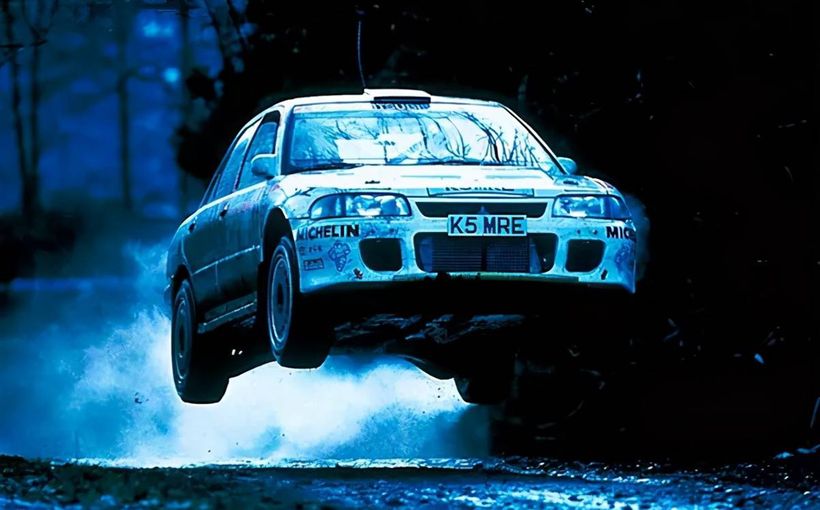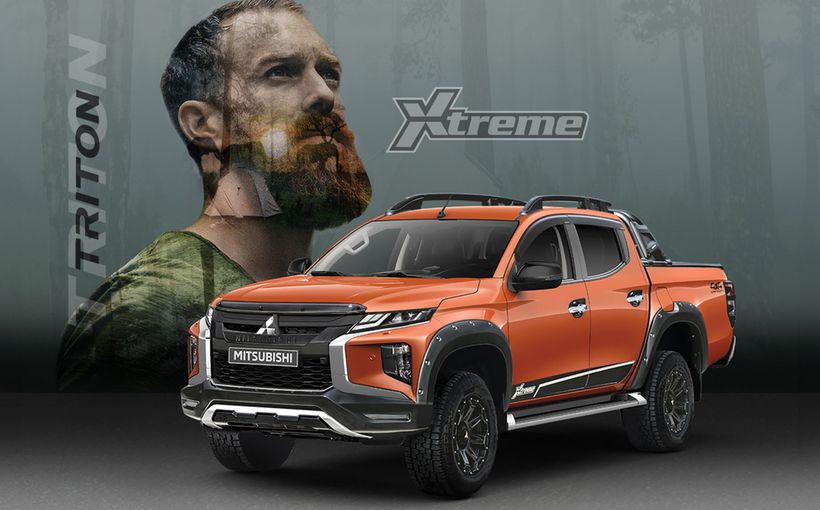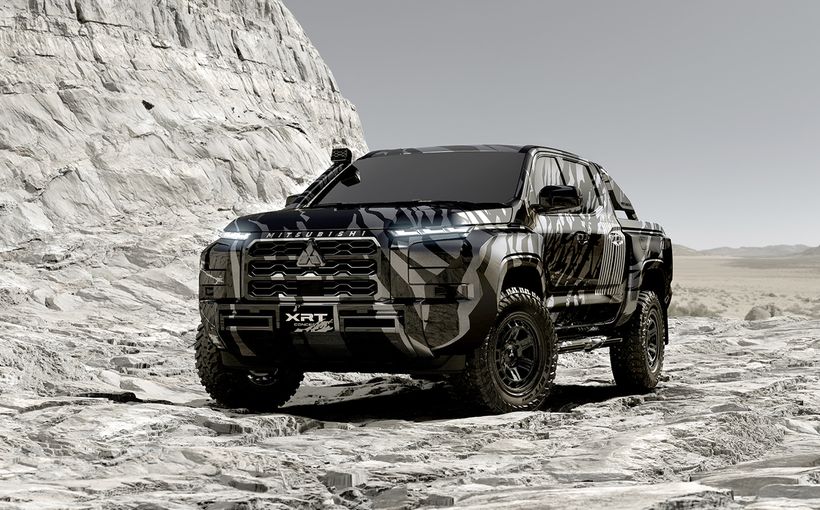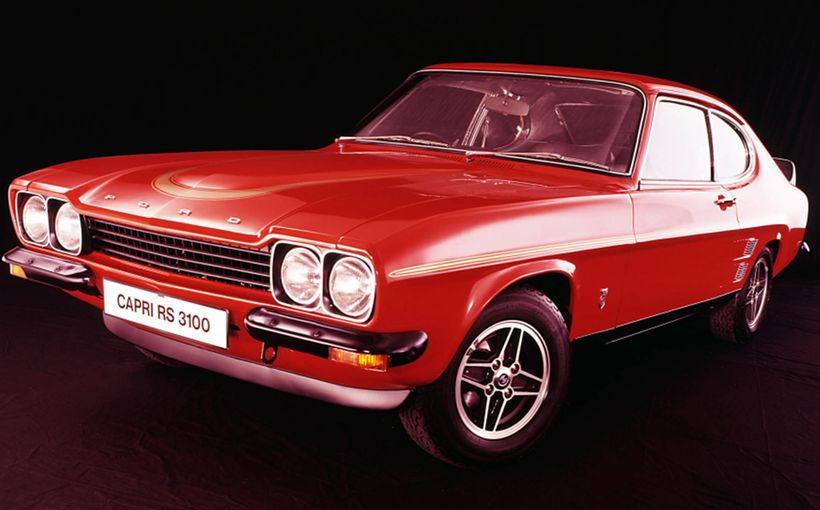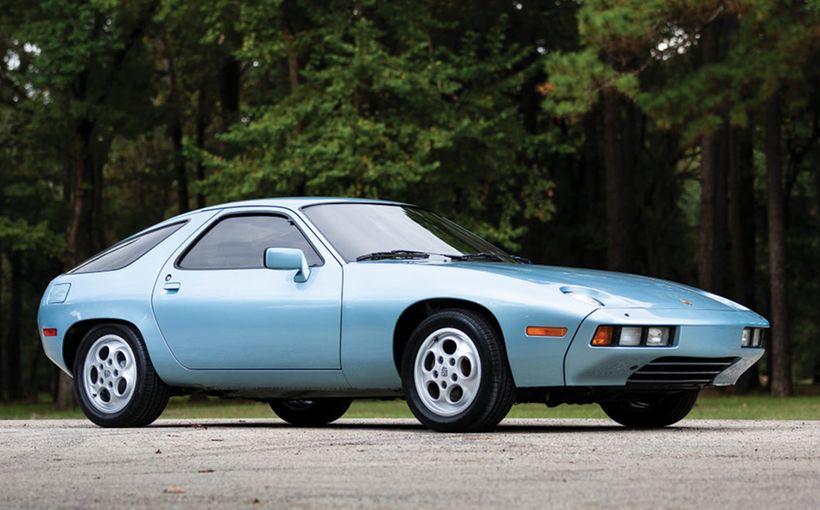Mitsubishi Galant VR-4: how Aussies starred in a global success story

The Galant VR-4 lives in the formidable shadow of its smaller, lighter and faster Lancer Evo replacement, which achieved unprecedented success for Mitsubishi in the World Rally Championship (WRC).
However, to remember the sixth generation Galant as primarily the progenitor of the Lancer Evo is to sell it way short. Although it didn’t win the WRC, it was an enormously successful rally car on a global scale, which included numerous titles in which Aussie drivers Ross Dunkerton and Ed Ordynski played starring roles.
South Australian Ordynski won the 1990 Australian Rally Championship driving a Galant VR-4 in Group N or ‘showroom stock’ specification, while in 1991 and 1992 WA’s multiple ARC champ Ross Dunkerton won consecutive FIA Asia-Pacific Rally Championships (APRC) in works-entered Galant VR-4s prepared by Mitsubishi’s competition arm, Ralliart.
Between 1988 and 1992 the Galant VR-4 served as the Japanese marque’s frontline fighter in the WRC, campaigned by the UK-based factory team Ralliart Europe under Scottish rally great Andrew Cowan. It scored six WRC round victories, which was five more than its similar-sized Subaru Legacy RS rival.

The first was in 1989 when Mikael Ericsson won Finland’s 1000 Lakes Rally, followed by Pentti Airikkala’s victory in Britain’s RAC Rally the same year. WRC win number three came in 1990, when Patrick Tauziac won Africa’s notoriously tough Ivory Coast Rally, followed in 1991 by Kenneth Eriksson’s victory on home soil in Sweden.
Japanese driver Kenjiro Shinozuka, who starred for Mitsubishi in 1988 when he won the Asia-Pacific Rally Championship in a Galant VR-4, made more history for the marque in 1991 by winning the Ivory Coast - the first overall WRC round win by a Japanese driver. And in 1992, to prove it was no fluke he won it again, giving the Galant VR-4 three consecutive Ivory Coast wins and its final WRC victory before being replaced by the Lancer Evolution the following year.
Even so, the resilient Galant VR-4 continued to be highly competitive in regional championships well into the 1990s, competing in both showroom stock Group N and more modified Group A specifications. In addition to its three APRC drivers’ crowns and two manufacturers’ titles plus the single ARC win, it also featured strongly in Europe and the Middle East.
The robust and reliable Mitsubishi proved a popular choice for privateers, including German driver Erwin Weber who won the 1992 European Rally Championship - the first driver to win the title in a Japanese car.
Put simply, the Galant VR-4’s competition credentials are beyond question and should always be considered in any debate over the merits of Mitsubishi’s various rally weapons through the decades. And like many successful competition cars, its creation was more a case of evolution than revolution.

Group B to Group A
Mitsubishi already had extensive rally experience when the Galant VR-4 first appeared on the drawing boards. Like numerous Japanese post-war manufacturers, Mitsubishi identified a need to prove the quality and durability of its products to largely sceptical western export markets by competing in motor sport at the highest levels. And like Nissan (aka Datsun), it chose rallying rather than circuit racing as the best way to achieve it.
The company started to make headlines in the 1970s, firstly with the A50 Galant which was soon replaced by the smaller, lighter and faster Lancer 1600 GSR. This brilliant little car proved very successful in Australia, winning four straight Southern Cross Internationals plus the brutal East African Safari and other major events.
In the 1980s Mitsubishi’s competitive focus shifted to Rally Raid events headlined by the world-famous Paris-Dakar Rally, which it won outright a staggering 12 times between 1985-2007 with a variety of Pajero-based vehicles. It also scored multiple outright wins in other Raids including the rugged Australian Safari Rally.
However, by the early 1980s Mitsubishi also could not ignore the huge manufacturer and public interest building in the World Rally Championship which from 1982 was run to the FIA’s infamous Group B regulations, which allowed almost limitless freedoms in chassis, drivetrain, aerodynamics and power outputs. Audi’s innovative Quattro ensured that the WRC’s future lay in turbocharged engines and all-wheel drive.

Mitsubishi promptly started development of a Group B Starion prototype, equipped with a turbocharged and intercooled 2.0 litre four-cylinder engine and all-wheel drive transmission. Sadly this exciting project was shelved in 1986 following the FIA’s cancellation of Group B on safety grounds, replaced by the less powerful and more production-based Group A rules for 1987.
Mitsubishi embraced the new rules by adapting the all-wheel drive underpinnings of its stillborn Starion Group B to the latest Galant sedan. After only four years, though, it would suffer the same fate as similar-sized rivals in having its drivetrain transplanted again into a smaller, lighter and faster model for WRC duty (in this case, the Lancer Evo).
Even so, the Group A Galant’s engineering and technology were at the cutting edge for its time, as proven by the fact it remained a competitive rally car outside the WRC sphere for many seasons. As the Group A rules required series production of at least 5000 road-legal examples, numerous export markets including Australia were treated to one of Japan’s most refined and supremely competent high-performance cars.
Its model designation VR-4 stood for ‘Viscous Realtime 4WD’ - a succinct description of its advanced chassis and drivetrain which combined a full-time all-wheel drive system (employing a viscous-coupling centre diff) with four-wheel steering and four-wheel ABS. This was claimed to be the automotive world’s first integration of these advanced features in one vehicle.

Suspension was fully independent as you’d expect, with MacPherson struts up front and a semi-trailing arm rear. In standard trim the VR-4’s potent 4G63T 2.0 litre DOHC 16-valve turbocharged inline four cylinder was mounted east-west as per the standard Galant, pumping out 177kW (237bhp) at 6000rpm and 304Nm (224ft/lbs) of peak torque at 3500rpm through a five-speed manual gearbox.
A works-prepared Group A Ralliart WRC car was considerably lighter than the 1438kg kerb weight road car from which it was derived and much stronger. The stripped-out bodyshell was fully spot-welded and plated, with a double-layer floor skin, front suspension tower cross-brace and a roll cage which attached to every critical load point in the bodyshell to create a triangulated space-frame with enormous rigidity and crash safety.
The 4G63T turbocharged and intercooled 2.0 litre engine was tweaked to produce at least 300bhp using the FIA’s mandated turbo inlet restrictor and 80-litre foam-filled aluminium fuel tank in the boot. A competition-grade clutch and Xtrac five/six-speed gearbox fed power to the all-wheel drive transmission with its superb four-wheel steering system. Subframes and rose-jointed suspension components were also strengthened and braking was boosted by four massive ventilated disc brakes clamped by multi-pot calipers.
In 1991 Mitsubishi introduced an upgraded version in the WRC logically called the ‘Evolution’ with its primary goal to produce more power without compromising reliability. This was achieved with a larger turbocharger, intercooler and fuel injectors. The VR-4 Evolution was easily identified externally by vents in the bonnet.

The Aussie connection: Dunkerton and Ordynski
“I doubt if most competitors, let alone the average person who follows motor sport, realise what an amazing feat Ross achieved in the Asia-Pacific Rally Championship, going to events in an era where the rallies in those countries were daunting, remote and in my view, downright dangerous,” said Australian rally ace Ed Ordynski in Dunko, Bob Watson’s insightful biography of another of the nation’s greatest gravel drivers, Ross Dunkerton.
“Ross was a master of the toughest conditions in Asia and anyone who competed against him, including Possum Bourne, Rod Millen, Kenjiro Shinozuka and even world championship stars like Colin McRae, Richard Burns and Kenneth Eriksson were often no match for Ross and held him in the highest esteem. Many drivers from Australia tried a few events in Asia in those days and came home vowing never to return, their tails firmly between their legs, while Ross continued on his winning way.”
Ross Dunkerton won back-to-back FIA Asia-Pacific Rally Championships for Mitsubishi in 1991-92 driving Ralliart-prepared Galant VR4s. Although the APRC has a lower profile on the world stage these days, back in the late 1980s and early 1990s when Dunkerton was a Mitsubishi works driver, the competition was ferocious.

That’s because from its inception in 1988, more than half of the events were joint APRC/WRC rounds which reflected the successful expansion of the traditionally Euro-centric WRC into south-east Asia. This included a round in Australia for the first time, with Perth’s Rally Australia following Adelaide’s lead in securing a round of the F1 World Championship three years before.
However, by the late 1990s the big WRC teams were starting to scale down their APRC commitments and, following the 2000 Rally New Zealand which was the last joint APRC/WRC round, it was left to regional teams and manufacturers.
In those early years, though, the WRC’s top factory teams and drivers were annually competing in the Asia-Pacific theatre, including Toyota’s multiple world champ Carlos Sainz who won the APRC in 1990. Other world champions to record APRC round victories included Colin McRae, Tommi Makinen, Juha Kankkunen, Didier Auriol, Richard Burns and Ari Vatanen - some competition!

Even so, Mitsubishi enjoyed great success during that amazing era, with Japanese works driver Kenjiro Shinozuka winning the first championship in 1988 in a Ralliart Galant VR-4. Three years later Dunkerton became Ralliart’s top gun in Asia, which showcased the gritty WA driver’s ability to adapt his forceful style to best suit the unique terrain.
“Ross had a unique driving style that was perfectly suited to the conditions encountered in the slippery rubber plantations in Malaysia,” Ordynski said. “I was astonished when I first rode with him in a Ralliart Group A Galant VR-4. His technique was to dip the clutch in a corner the way most other drivers would left-foot brake. Where I would have, say two or three left-foot brake presses to keep the car on line, Ross would dump the clutch causing the car to turn in when he pressed it, then launch into oversteer when he released it under full power. It worked a treat the more slippery it was, especially as the powerful 4WD cars of that era didn’t turn in very well.”
Dunkerton’s formidable speed and versatility commanded respect from WRC rivals and his colourful personality proved popular with APRC organisers and spectators. Even so, there were numerous occasions when the hard-charging Aussie realised that not all locals were supportive of rally cars tearing through their ‘backyards’ each year.

“Rallying in Asia in general was often more dangerous than in Australia and Indonesia was no different,’ Dunkerton said. “Many of the stages were in oil palm plantations which were dotted with villages. Everyone was told that a rally was coming through their estate but you could guarantee during the event you would come across locals on motorbikes, tractors or pushbikes on the course. A favourite trick of some villages was to pour water on the exit of a blind corner then sit in the jungle and watch the action unfold.
“Malaysia too had its share of unexpected surprises in the stages. One particular stage that was used quite often in the Rally of Malaysia had a long straight for about 4km with five big crests. It was critical for the co-driver to call the crests properly because the last one had a 90-degree turn right and then the road went downhill in a big sweeping corner back into the rubber plantation. We executed the turn right and were back up to about 160km/h as we entered the dark area under the rubber tree canopy. As my eyes adjusted to the momentary darkness, I suddenly saw rocks half a metre in diameter across the road.
“At that speed I could do nothing but try to keep the car straight when I hit them. The impact tore the front wheels off and damaged both rears. I was fighting to control the car as the steering had gone but luckily the car remained relatively straight and we came to rest in a ditch, the car destroyed. Not everyone was happy to have rally cars in their villages, but the ever-present danger was all part of being a paid rally driver.”

Ed Ordynski, while full of praise for Dunkerton’s success with Mitsubishi in the APRC, is also deserving of accolades for winning the 1990 Australian Rally Championship, also in a Galant VR-4.
However, his private entry was not a full-house Ralliart Group A car like Dunkerton’s, as there was no Mitsubishi factory involvement in the ARC. Ordynski’s car was built to the much milder and less expensive Group N ‘showroom stock’ specification, which made his win so impressive.
It should also be noted that several of Ordynski’s main rivals including George Kahler, Geoff Keys and Ron Cremen also drove VR-4s. Cremen, like Ordynski, also chose to run his car in Group N trim as numerous privateers had discovered that fiddling with the finely-tuned showroom specification usually resulted in slower stage times. Other title threats were future ARC champs Neal Bates in his new Celica GT-4 and WA’s Rob Herridge in a Subaru RX Turbo.

A surprise Galant VR-4 starter in Tasmania’s first round and Victoria’s second was multiple ARC champion George Fury, having been replaced in Nissan’s touring car team the previous year by Mark Skaife. His brief ARC comeback after an absence of many years proved the NSW farmer had lost none of his skill on loose surfaces, winning both events with navigator Ross Runnalls before withdrawing from the championship. He’d made his point though.
Ordynski and navigator Mark Nelson finished third in Tasmania and second in Victoria before claiming another runner-up spot in WA, this time to Herridge’s Subaru RX Turbo. Ordynski then showed his superiority by winning the remaining three rounds in South Australia, Queensland and NSW to wrap up both the outright championship and Group N title as well. It was a dominant performance, according to the 1990 Australian Motor Racing Yearbook review.

“Ordynski, whose softly-spoken manner hides an iron determination, ran a lean, efficient and very effective team, planned his events meticulously and drove prudently, while still being prepared when circumstances warranted to motor as hard as was necessary. He finished every round with his car virtually unmarked and gave his sponsor Pedders, a perfect result. What more could anyone expect?”
The same could be said of the versatile Galant VR-4, which achieved an enviable level of success in WRC and numerous regional championships that is often overlooked. It was, without question, one of Mitsubishi’s – and indeed Japan’s – greatest rally cars.



